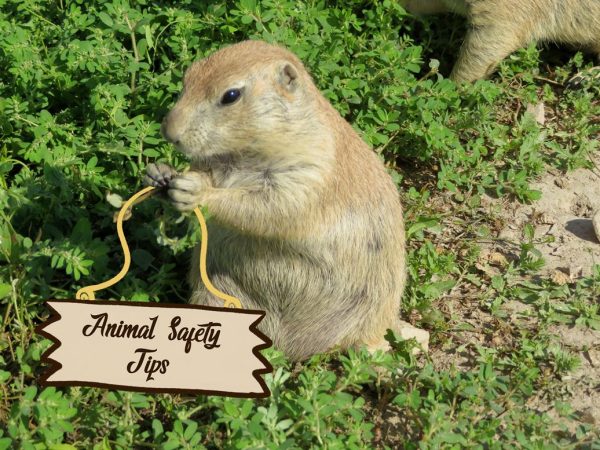I will be the first to admit, animals are incredibly adorable. But wild animals should not be messed with. In the wilderness, most animals won’t bother you, so don’t bother them. I always recommend looking into what animals inhabit the forests you’re exploring. Some popular wildlife include bears, moose, rattlesnakes, mountain lions/cougars, porcupine and so on. A good rule of thumb for any species you may encounter is to keep your distance and never feed any wildlife you come across. If you ever want an abundance of information on wildlife checkout the National Park Service for more information.
Bear safety
Since starting hiking in 2015, I’ve had three bear encounters. They go smoothly if you remember to stay calm. If you can avoid a bear encounter do so by keeping your distance. Most bears will avoid humans if they hear them coming.
Assess your surroundings. Are you looking at one bear or multiple? Is it a cub? If it is a cub, can you locate the mom? Make sure to just be aware and don’t panic.
If a bear notices you, begin talking a little louder, remain still and stand your ground while slowly waving your arms. Make yourself as large as possible and make sure not to scream, as the bear could think this is the sound of prey. If you’re hiking with children, pick them up so they can also appear as large as possible.
The bear might come closer or stand on it’s hind legs – standing is a sign of a curious bear and isn’t usually a direct threat.
In the rare case of a bear attack:
Brown/Grizzly – play dead. Brown/Grizzly bears have a hump on the back of their necks and their hind legs are lower than their shoulders. They also have a ruff of fur under their necks.
Black Bears – fight back and try to escape to a safe place. Black bears have a pretty flat back, no hump, legs are higher than their shoulders, and no ruff under their neck.
Check out the National Park Service for more information.
When camping:
Make sure to keep food packed up and stored in an airtight container. Bears have a great sense of smell and will seek out your food if you keep it out. If you are car camping, make sure to pack your food away in your car as soon as you are finished with it. If you are tent camping, get a bear box to store your food. A bear box is a sealed container specifically made to keep bears out. Once you pack up your food you’ll want to walk away from your or anyone else’s campsite and hang the bear box from a high branch so the bear cannot easily reach it. Even if an extra motivated bear manages to bring it down, it’ll at least be far away from your camp site.

Rattlesnake Safety
This one almost got me twice. Luckily both rattlers were nice and gave me a rattle warning and didn’t just strike. I got extremely lucky both times. You need to stay vigilant on the trail and keep your eyes and ears open. If you’re going to sit on a ledge, check first before sitting down. If you visually can’t check, you can either use a hiking pole or a stick and dangle off the ledge. If you hear rattling, don’t dangle your legs there. I’d much rather have a warning before dealing with a rattl esnake’s bite.
esnake’s bite.
In the case you do get bit, remember this: remain calm, remove any jewelry or tight clothing that may restrict circulation in the area – don’t remove shoes, create an evacuation plan, check if you have cell service, if you do contact emergency services, most times you’ll be at an inaccessible point but they can guide you in response and have EMTs meet you at the closest exit of the trail. In the case you don’t have service, wash the wound – do not do anything else, then keep the wound at heart level – in the case the wound is at the lower limbs, it is okay to walk, just exit the park to a hospital as quickly as possible but try your best to not panic.
Mountain Lion/Cougar
These felines generally keep to themselves. They are quiet, great at keeping out of sight, and rarely attack. If you do come across them stay calm, do not directly approach them, and hold your ground. You’ll want to everything you can to appear intimidating so make yourself large and make a lot of arm movement. If this doesn’t scare them off, start throwing rocks, branches, or hard items that are within arms reach (you don’t want to bend down to retrieve them) at the ground in front of them. Just make sure to never turn your back on a mountain lion/cougar If this doesn’t work and the animal keeps on approaching, start throwing the items at them, and ultimately fight back if/when necessary.
For all other animals, just avoid coming too close to them and feeding them.
Animal encounters are rare but being informed on how to handle an encounter is the safest way to be prepared. Happy hiking!




